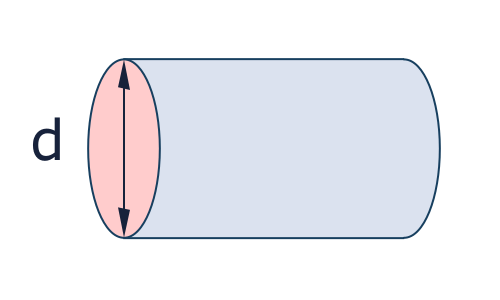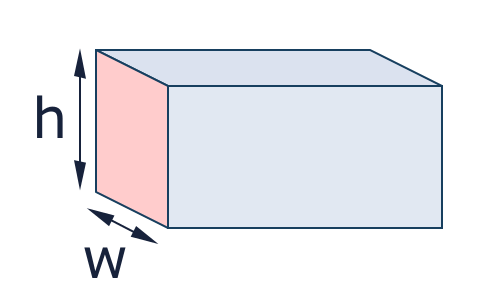Air Volume Flow Calculator
Calculate air volume flow rate based on pipe dimensions and fluid velocity. Enter the fluid flow rate, air duct size, and fluid density.


Flow Rate Formulas
- Volume Flow Rate: Q = A × v
- Mass Flow Rate: ṁ = ρ × Q
- Cross-sectional Area: Circular: A = π × (d/2)², Rectangular: A = h × w
FAQ
- What is the difference between volume flow rate and mass flow rate?
Volume flow rate measures the volume of fluid passing through a point per unit time (e.g., m³/s), while mass flow rate measures the mass of fluid passing through a point per unit time (e.g., kg/s). Mass flow rate is calculated by multiplying volume flow rate by the fluid density. - How do I calculate the cross-sectional area for different pipe shapes?
For circular pipes: A = π × (diameter/2)². For rectangular/square pipes: A = height × width. The calculator automatically handles these calculations based on your selected shape and input dimensions. - What units can I use for the calculations?
For dimensions: mm, cm, or inches. For velocity: m/s or ft/s. For density: kg/m³, g/cm³, kg/L, lb/ft³, or lb/yd³. The calculator supports various output units including CMS, CMM, CMH, LPS, LPM, LPH for volume flow, and kg/s, kg/min, kg/h, lb/s, lb/min, lb/h for mass flow. - How accurate are the flow rate calculations?
The calculator provides theoretical flow rates based on ideal conditions. For real-world applications, consider factors like pipe roughness, fittings, bends, and fluid viscosity which may affect actual flow rates. The results are suitable for initial design and estimation purposes. - What are typical velocity ranges for different applications?
Typical velocities: HVAC ducts (2-8 m/s), water supply pipes (1-3 m/s), compressed air (10-20 m/s), steam (20-40 m/s), and natural gas (5-15 m/s). These ranges help minimize noise, pressure drop, and energy consumption while ensuring adequate flow. - How do I convert between different flow rate units?
The calculator automatically handles unit conversions. Common conversions: 1 m³/s = 60 m³/min = 3600 m³/h, 1 L/s = 60 L/min = 3600 L/h, 1 ft³/s = 60 ft³/min = 3600 ft³/h. For mass flow: 1 kg/s = 60 kg/min = 3600 kg/h.